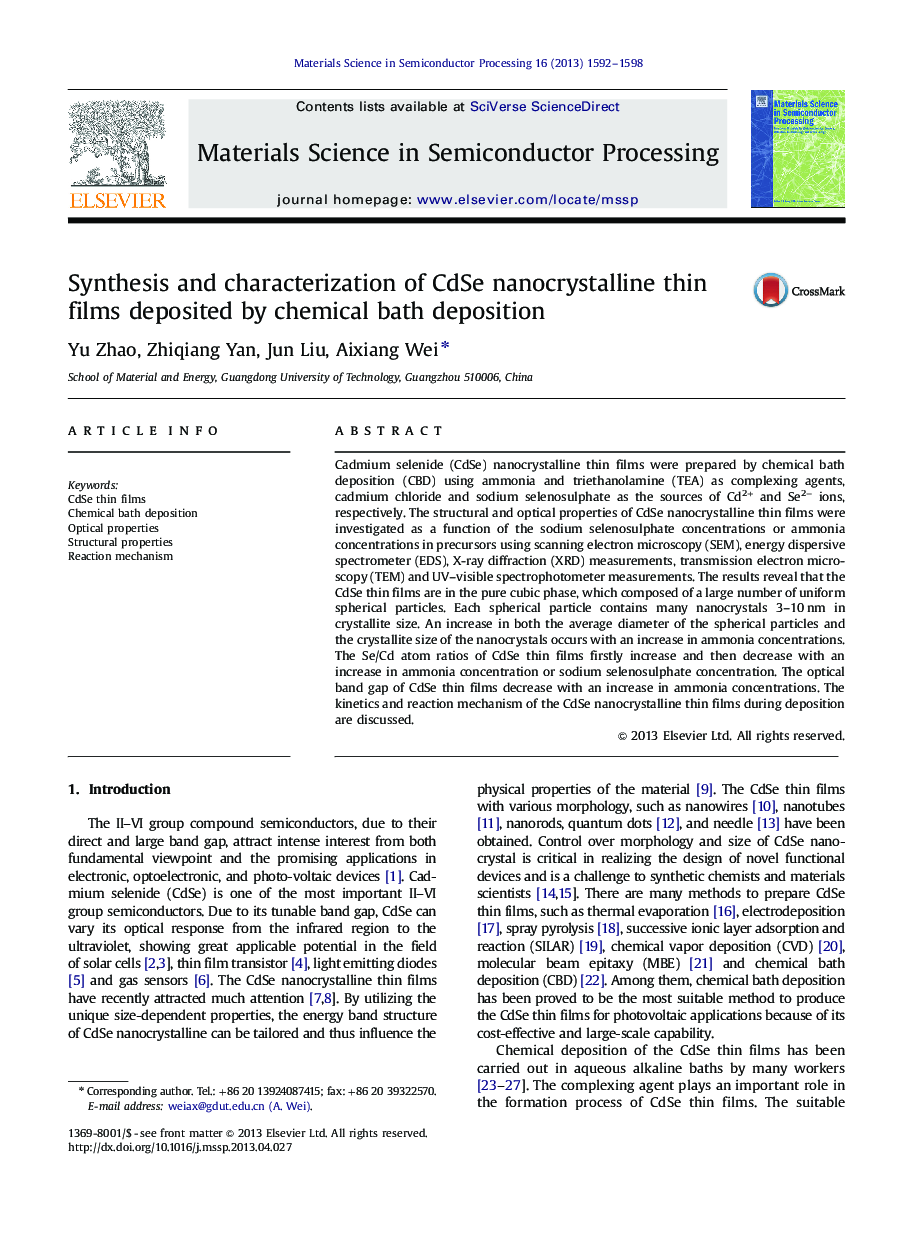| Article ID | Journal | Published Year | Pages | File Type |
|---|---|---|---|---|
| 10407021 | Materials Science in Semiconductor Processing | 2013 | 7 Pages |
Abstract
Cadmium selenide (CdSe) nanocrystalline thin films were prepared by chemical bath deposition (CBD) using ammonia and triethanolamine (TEA) as complexing agents, cadmium chloride and sodium selenosulphate as the sources of Cd2+ and Se2â ions, respectively. The structural and optical properties of CdSe nanocrystalline thin films were investigated as a function of the sodium selenosulphate concentrations or ammonia concentrations in precursors using scanning electron microscopy (SEM), energy dispersive spectrometer (EDS), X-ray diffraction (XRD) measurements, transmission electron microscopy (TEM) and UV-visible spectrophotometer measurements. The results reveal that the CdSe thin films are in the pure cubic phase, which composed of a large number of uniform spherical particles. Each spherical particle contains many nanocrystals 3-10Â nm in crystallite size. An increase in both the average diameter of the spherical particles and the crystallite size of the nanocrystals occurs with an increase in ammonia concentrations. The Se/Cd atom ratios of CdSe thin films firstly increase and then decrease with an increase in ammonia concentration or sodium selenosulphate concentration. The optical band gap of CdSe thin films decrease with an increase in ammonia concentrations. The kinetics and reaction mechanism of the CdSe nanocrystalline thin films during deposition are discussed.
Keywords
Related Topics
Physical Sciences and Engineering
Engineering
Electrical and Electronic Engineering
Authors
Yu Zhao, Zhiqiang Yan, Jun Liu, Aixiang Wei,
